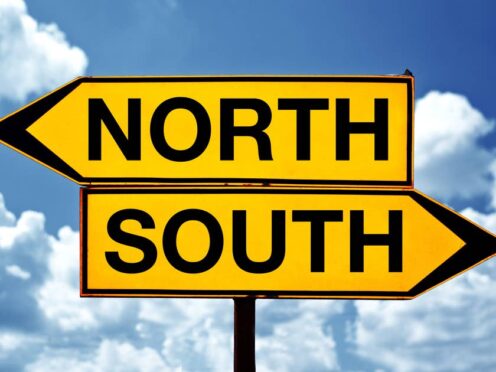The North faces decades of lower healthy life expectancy compared with the South East, according to a study.
The Institute for Public Policy Research North (IPPR) found it will be 2080 before the gap in healthy life expectancy – defined as the average number of years a person can expect to live in good health – really changes.
By 2030, “the number of years you can expect to live in good health in the North and Midlands would be two and a half years shorter than the South and three and a half years shorter than in London”, the study found.
“The worst-performing region, the North East, is also on course for a decline across both male and female groups.
“Extending these overall trajectories, the gap in healthy life expectancy between the North and the all-England average would not close until 2056/57 while the gap between the North and South East would endure until 2079/80, and the gap between the North and London would grow.”
The IPPR report said the North’s communities are “ambitious for a better future”, but face “systemic and pronounced inequalities”.
It added: “Gaps in power, wealth, opportunity, and health result in shorter, sicker, less fulfilling lives.”
Researchers found that gaps in regional wealth inequality will continue to grow, arguing that reforming capital gains tax – tax on the profit when an asset is sold – could fund local investment.
“Wealth inequalities are growing rapidly across England,” the study said.
“Wealth encompasses property, financial, material, and pension assets.
“While England’s average wealth per person grew from around £226,300 in 2010 to £290,800 by 2020, regional inequalities in wealth have widened.
“For instance, the gap per head between the average wealth per person in England overall and the North stood at £71,000 in 2020, almost double the gap in 2010, at around £37,300.”
Based on current trends, this gap will reach £228,800 per head between the South East and the North by the end of the decade, the IPPR said.
Also based on current trends, by 2030 London’s employment rate will be 66%, while the North East’s will “barely reach” 56%.
Report author and IPPR North research fellow Marcus Johns said: “No one should be condemned to live a shorter, sicker, less fulfilling, or poorer life simply because of where they were born.
“Yet, that is what our regional inequalities offer today as gaps in healthy life expectancy and wealth endure over the generations, demanding urgent action if we are to change course.
“It’s hard to avoid the conclusion we are headed in the wrong direction on inequality in health, wealth, power, and opportunity while local government finances languish in chaos.
“This is a crucial year for elections, locally and nationally, and Westminster cannot afford to ignore the state of the North.
“We know there are ready-to-go policies that will help arrest and reverse these problems and grasping them could make this year the year that kickstarts a decade of regional renewal.”
The IPPR is calling for “German-style levels” of investment in England’s regions to the tune of £7.6 billion a year over 15 years.
This could be funded by raising up to £13 billion a year through a targeted wealth tax, it said.
Other measures include reforming local government finance according to need and in a way that allows councils to plan longer term.
A Government spokesperson said: “Levelling Up is a long-term programme of reform that sits at the heart of our ambition as a Government. From investment in town centres and high streets to devolving more money and power to local communities, we are spreading opportunity across the North and to places where investment is most needed.
“We have committed £13 billion to levelling up, which is supporting projects to improve everyday life for people across the UK – regenerating town centres and high streets, local transport and cultural and heritage assets.”
